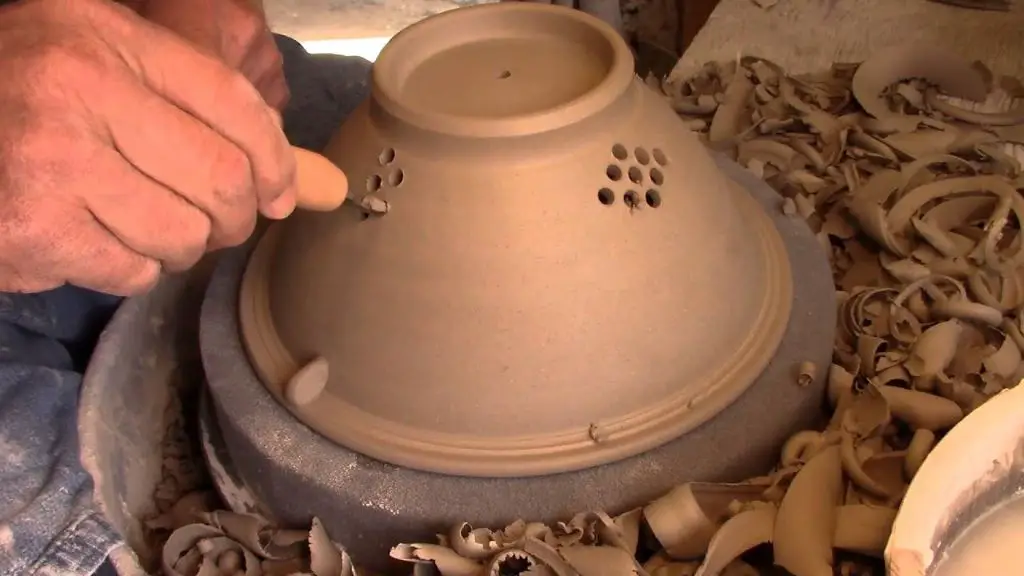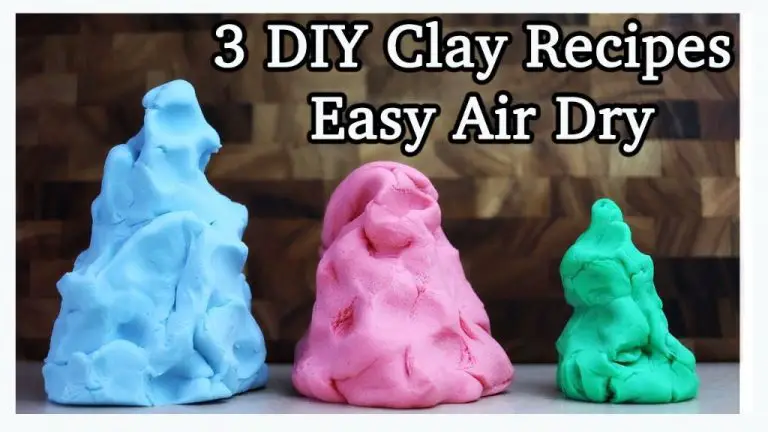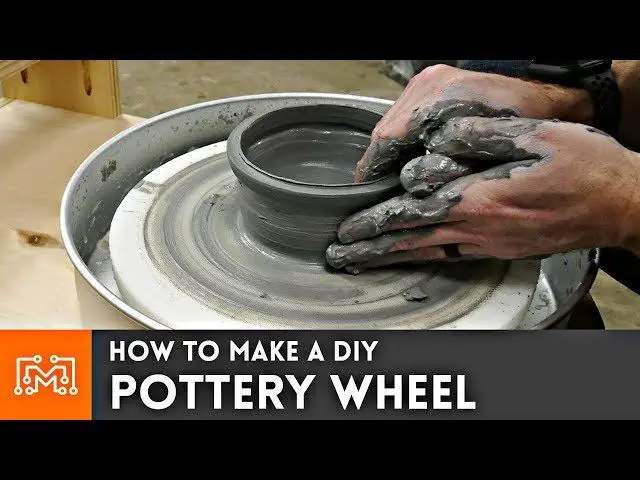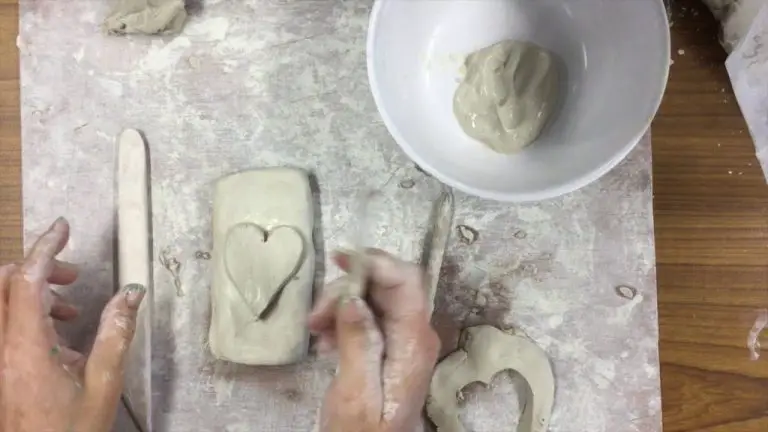How Do You Remove Clay From A Clay Cutter?
Clay cutters are tools used for cutting shapes and patterns out of blocks or sheets of polymer clay. As the clay is pushed through the cutter, small pieces can get stuck in the cutter’s openings and edges. Over time, clay remnants build up and can prevent the cutter from functioning properly.
Having clay stuck in a cutter can make it difficult to get clean, sharp cuts in the clay. It can distort the shapes being cut out or prevent the clay from going through the cutter at all. The remnants also stop the cutter from being able to imprint precise patterns and details into the clay.
Removing stuck clay from the cutter is important for keeping it in good working condition. A cutter free of clay residues will help crafters cut accurate designs and get the results they want from their clay projects.
Soaking the Cutter in Water
One of the easiest ways to remove clay from a cutter is by soaking it in warm water. Fill a bucket or sink with warm water and submerge the cutter in it. Let the cutter soak for 10-30 minutes. The water will soften and rehydrate the clay, making it much easier to wash off the cutter.
Reddit user u/DianeBcurious recommends this method, saying “I’d suggest soaking the cutter in warm-to-hot water for awhile which will soften the clay again.” (Source)
The length of time needed to soak will depend on the thickness and stiffness of the clay. Thicker clay stuck in intricate cutters may require a longer soak to fully soften. Check the cutter periodically and see if the clay can be gently rubbed off under the water. If not, let it soak longer until the clay is pliable enough to remove.
Using Compressed Air
One effective method for removing stuck clay from a cutter is by using compressed air. You can use a compressed air canister, available at most hardware stores, to blast air into the cutting components of the clay cutter. Focus on aiming the air into crevices and holes where clay often gets stuck.
The high pressure air stream will help to dislodge any dried or stuck clay bits. Keep blasting compressed air until you’ve removed all visible clay remnants. The compressed air is able to reach into small nooks that are hard to access otherwise. Just take care not to blow the clay debris all over the surrounding area – do this over a trash can or outside.
Compressed air works well as an initial cleaning step to remove the bulk of stuck clay before scrubbing more delicately with a toothbrush or other tool to finish the job.
Scrubbing with an Old Toothbrush
One simple and effective way to clean a clay cutter is by scrubbing it with an old toothbrush. Use a used toothbrush with stiff bristles that will be able to scrub away dried clay residue effectively. Dip the toothbrush in warm water and scrub at the cutting parts and edges of the cutter, applying moderate pressure. The bristles of the toothbrush can easily get into small detailed areas and undercut sections of the cutter.
According to Sculpey, “Use an old toothbrush to scrub away any leftover residue” (https://www.sculpey.com/blogs/blog/how-to-clean-your-clay-tools). The toothbrush method works well because the stiff bristles can scrub away stubborn clay pieces without damaging the cutter itself.
Using a Wooden Skewer
One effective method for removing clay from a clay cutter is by using a wooden skewer. Start by inserting the skewer into any small holes or crevices in the cutter where clay may be stuck. Gently scrape and dislodge any clay remnants by sliding and twisting the skewer around the inside of the cutter (source). Be very careful not to scrape or damage any parts of the cutter as you use the skewer. The wood should be soft enough to clear out the clay without scratching the cutter.

Focus on hard to reach areas and keep working the skewer until no more clay pieces come loose. The slender shape and rigidity of the wooden skewer makes it ideal for cleaning inside tight spaces. Just take care to use a light touch so as not to bend or break the tip of the skewer.
Scrubbing with a Pipe Cleaner
One effective method for removing clay from a clay cutter is to use a pipe cleaner. Pipe cleaners have a twisty, fuzzy texture that can be very useful for grabbing onto and removing bits of clay stuck in holes or gaps.
To use a pipe cleaner, simply twist it into any small openings or crevices on the cutter where clay may be lodged. The fuzzy nature of the pipe cleaner will help grab onto any clay pieces. Twist the pipe cleaner around to scrape out the clay. Rinse the pipe cleaner under running water as needed to remove the clay pieces that accumulate.
Pipe cleaners are inexpensive and readily available at most craft stores. Their flexibility allows them to reach into tight spaces. Just be sure to use a fresh, clean pipe cleaner so that it is most effective at removing clay particles. With some scrubbing using a pipe cleaner, you can easily clean out residual clay from a cutter.
(Source: https://www.reedmfgco.com/en/products/cutters-and-cutter-wheels/pipe-descalers/)
Using Compressed Air Followed by a Toothbrush
One effective method for removing dried clay from a cutter is to first use compressed air to dislodge any large chunks or pieces of clay stuck in the cutter.
Compressed air can be purchased in cans, which allows you to spray targeted blasts of air directly onto the cutter.
Aim the compressed air into any crevices or etched designs where clay may be caught. The powerful air pressure will help dislodge and break apart any built-up clay.
After using the compressed air, scrub the clay cutter with an old toothbrush and water to remove any remaining clay residue. The toothbrush bristles will be able to scrub away any small fragments left behind.
Make sure to rinse the cutter thoroughly after scrubbing to wash away all traces of clay. The combination of compressed air followed by scrubbing with a toothbrush is very effective for deep cleaning dried clay out of a cutter.
For best results, compressed air cans like this one and soft-bristled toothbrushes can be purchased at most arts and crafts stores.
Soaking in Vinegar
One of the most effective ways to clean hardened clay off of a clay cutter is to soak it in vinegar. Simply fill a container with white distilled vinegar and fully submerge the clay cutter in the vinegar. Let it soak for at least 30 minutes, or even overnight for cutters with thick clay buildup. The acetic acid in the vinegar will help dissolve and loosen any dried clay or mineral deposits on the cutter.
As this article from Sculpey explains, “Letting the vinegar soak into the rust will take more time. Leave it soaking overnight.” https://www.sculpey.com/blogs/blog/how-to-clean-your-clay-tools
After letting it soak, use an old toothbrush or other scrubbing tool to gently remove any remaining material. The combination of the vinegar soak plus scrubbing should leave your clay cutter looking clean and ready to use again.
Using a Small Hooked Tool
A small metal tool with a hooked end can be very effective for removing clay from a clay cutter. Carefully insert the hooked end into any holes or ridges where clay may be lodged. Gently move the tool around to dislodge and pull out pieces of clay. Be sure to work slowly and cautiously so as not to scratch or damage the surface of the cutter itself.
Specialty clay tools like the Serrated Hook and Knife Tool from Xiem Tools USA (http://www.xiemtoolsusa.com/Serrated-Hook-and-Knife-Tool-Hand-Forged_p_245.html) are ideal for this purpose. The serrated edges allow you to scrape and pull clay off without risking harm to the cutter. When using any hooked tool, take care not to be overly aggressive, and avoid metal-on-metal contact between the tool and cutter that could cause scratches.
Target any stubborn areas of built up or caked on clay. The hook can dig into crevices and provide the leverage needed to remove clay while minimizing the risk of damage. With patience and care, a small hooked tool can effectively clean clay cutters and molds.
Conclusion
There are several effective methods for removing clay from a clay cutter, including soaking in water or vinegar, scrubbing with an old toothbrush or pipe cleaner, using wooden skewers or small hooked tools, and using compressed air. It’s important to keep your cutter clean for optimal performance and to avoid buildup of dried clay that can impede the cutter’s ability to cut shapes smoothly. Metal scrubbing tools should be avoided as they may damage or scratch the cutter surface.
By regularly applying one or more cleaning techniques after use, you can keep your clay cutter in good working order. A clean cutter will cut cleanly through clay and produce smooth edges on each shape. Taking proper care of your clay cutters will extend their lifetime and functionality.https://www.myclayco.com.au/pages/myclayco-cutter-use-care
Remember, never use harsh chemicals or scrubbers to clean your cutter, and don’t soak in water for extended periods of time. With proper cleaning and maintenance habits, your clay cutter can stay in great shape for all your clay crafting needs.




